Optimizing your plate for print success: 5 tips for conducting your own platemaking audit
A competitive edge is vital to success in today's business environment. Producing high-quality work consistently and cost-effectively keeps that edge sharp; frequent reworks, unscheduled press stops and slower than necessary press speeds blunt it for printers. Plate process optimization can prevent these issues arising, improving plate quality and longevity, and maximizing your potential in both the plate room and on press.
As a concept, “process optimization” is frequently talked about but sometimes neglected – in many cases, simply because the plate maker or printer is unclear exactly what’s involved. In the first of two articles for the The Flexcel, Tom Kowalski, Global Printing Applications Specialist, explains what goes into optimizing the plate room.
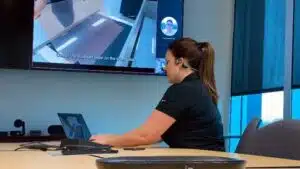 Optimization of the plate production process beings with a plate room audit: evaluating the variables within the process. This gives you a benchmark: where you are – what’s within specification, what isn’t – and the key aspects to improve. It can be challenging with flexo, because the process depends on achieving a balance between numerous variables – plates, inks, aniloxes, mounting tapes, presses – but creating a structure based on specifications and best practices makes it easier to resolve issues that do arise. When onsite audits aren’t possible, we can help you with remote audits: Remote audits: support when you need it – Miraclon.
Optimization of the plate production process beings with a plate room audit: evaluating the variables within the process. This gives you a benchmark: where you are – what’s within specification, what isn’t – and the key aspects to improve. It can be challenging with flexo, because the process depends on achieving a balance between numerous variables – plates, inks, aniloxes, mounting tapes, presses – but creating a structure based on specifications and best practices makes it easier to resolve issues that do arise. When onsite audits aren’t possible, we can help you with remote audits: Remote audits: support when you need it – Miraclon.
In the plate room everything starts with imaging, so begin the audit with the imager. Whatever the make and model, the imager requires regular maintenance, because if the imager is out of calibration, the rest of the platemaking process will be poor. Changing filters, calibrating lasers and drives, keeping lenses clean, and so on – all are critical to imaging performance.
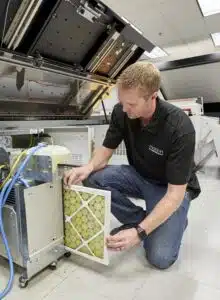 At the very least, servicing should take place annually, to prevent degradation and poor imaging quality. A service contract is money well spent: not only does it take care of essential maintenance, but it should also be viewed as the foundation of process control, an essential component of the drive to control variables in the very first stages of production. At Miraclon, all our technical support contracts include at least one preventative maintenance visit per year.
At the very least, servicing should take place annually, to prevent degradation and poor imaging quality. A service contract is money well spent: not only does it take care of essential maintenance, but it should also be viewed as the foundation of process control, an essential component of the drive to control variables in the very first stages of production. At Miraclon, all our technical support contracts include at least one preventative maintenance visit per year.
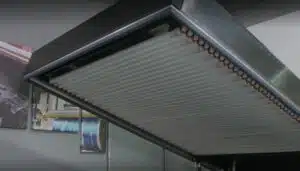 After imaging comes exposure. In most cases this is done with a UV exposure unit that uses fluorescent tubes as a light source. It’s important to know that the output from fluorescent bulbs degrades over time, requiring exposure times to be adjusted to compensate. Bulbs provide around 1000 hours of effective output. While it’s tempting to run bulbs for longer and push the plate exposure time right up – say 30 minutes for a given plate instead of the usual 15 minutes – this risks overheating the plate and causing curling. Make sure you record how long your bulbs have been in use and keep to a replacement schedule. This same applies to finishing, as we explain below. (Ask your Miraclon contact about how LED technology can help improve this step in your platemaking in the future, or register to learn more.)
After imaging comes exposure. In most cases this is done with a UV exposure unit that uses fluorescent tubes as a light source. It’s important to know that the output from fluorescent bulbs degrades over time, requiring exposure times to be adjusted to compensate. Bulbs provide around 1000 hours of effective output. While it’s tempting to run bulbs for longer and push the plate exposure time right up – say 30 minutes for a given plate instead of the usual 15 minutes – this risks overheating the plate and causing curling. Make sure you record how long your bulbs have been in use and keep to a replacement schedule. This same applies to finishing, as we explain below. (Ask your Miraclon contact about how LED technology can help improve this step in your platemaking in the future, or register to learn more.)
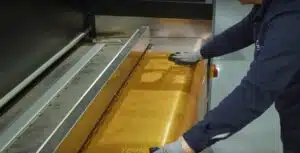 When it comes to processing the plate, the main obstacle to optimization is poor processor maintenance. Cleaning cycles are a particular issue. It’s a bit like what happens in the kitchen: cooking is fun, but washing up is a chore. Optimization isn’t difficult; operating manuals include instructions that plate room personnel can easily follow. Pay particular attention to attention to viscometer calibration, which is critical to maintaining the optimum solvent strength but differs depending on the type of solvent you’re running. See: Best Tips for Keeping Your Solvent Happy – Miraclon. Solvent recycling is another aspect to pay attention yo. Maintaining the correct balance between fresh and recycled solvent is critical because of differing rates of evaporation. Remember to use the Invert Trim Waste feature of the FLEXCEL NX System that helps reduce the amount of polymer dissolved, which saves solvent and reduces cost. See: How to use Invert Trim Waste to cut solvent costs in platemaking. However, follow the manufacturer’s recommendations and you won’t go wrong.
When it comes to processing the plate, the main obstacle to optimization is poor processor maintenance. Cleaning cycles are a particular issue. It’s a bit like what happens in the kitchen: cooking is fun, but washing up is a chore. Optimization isn’t difficult; operating manuals include instructions that plate room personnel can easily follow. Pay particular attention to attention to viscometer calibration, which is critical to maintaining the optimum solvent strength but differs depending on the type of solvent you’re running. See: Best Tips for Keeping Your Solvent Happy – Miraclon. Solvent recycling is another aspect to pay attention yo. Maintaining the correct balance between fresh and recycled solvent is critical because of differing rates of evaporation. Remember to use the Invert Trim Waste feature of the FLEXCEL NX System that helps reduce the amount of polymer dissolved, which saves solvent and reduces cost. See: How to use Invert Trim Waste to cut solvent costs in platemaking. However, follow the manufacturer’s recommendations and you won’t go wrong.
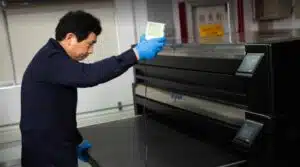 Next on the optimization checklist is drying, where the critical factors are airflow and temperature. When we talk about airflow, we are mostly talking about the efficient exhausting of solvent fumes, and most concerned with elevation – for example, configurations in which the exhaust system runs to a considerable height before venting. In such cases, because solvent fumes are heavier than air, additional blower capacity will be necessary to create the correct airflow at the exhaust point – otherwise fumes will fail to rise, creating back pressure on the unit. To aid optimization, refer to the airflow specifications set out in the manufacturer’s manual.
Next on the optimization checklist is drying, where the critical factors are airflow and temperature. When we talk about airflow, we are mostly talking about the efficient exhausting of solvent fumes, and most concerned with elevation – for example, configurations in which the exhaust system runs to a considerable height before venting. In such cases, because solvent fumes are heavier than air, additional blower capacity will be necessary to create the correct airflow at the exhaust point – otherwise fumes will fail to rise, creating back pressure on the unit. To aid optimization, refer to the airflow specifications set out in the manufacturer’s manual.
Airflow also impacts temperature. There are typically three blower units per six dryer drawers and, bearing in mind that heat rises, there are specific calibration requirements for each unit to ensure all operate at the same temperatures. When the dryer is first set up during plate optimization, the plate specialist will calibrate the drawers correctly, but degradation over time will call for adjustments.
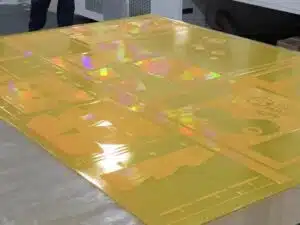 Which brings me to my final tip: finishing, which, if not optimized correctly, can undo all your previous good work. We have already explained how important a correct bulb replacement schedule is for exposure, and the same applies to the UVC bulbs critical to controlling the surface tension of the plate. If you use the bulbs for more than 1,000 hours you risk wattage degradation, which in turn causes poor surface tension and plates that are not properly polymerized and won’t print well. You should apply the same good practice to the UVA bulbs that control plate hardness and so ensure good resistance to solvents and improve durability. For a more in-depth look at optimized finishing, see How to Optimize Plate Finishing (it’s not just about time) – Miraclon.
Which brings me to my final tip: finishing, which, if not optimized correctly, can undo all your previous good work. We have already explained how important a correct bulb replacement schedule is for exposure, and the same applies to the UVC bulbs critical to controlling the surface tension of the plate. If you use the bulbs for more than 1,000 hours you risk wattage degradation, which in turn causes poor surface tension and plates that are not properly polymerized and won’t print well. You should apply the same good practice to the UVA bulbs that control plate hardness and so ensure good resistance to solvents and improve durability. For a more in-depth look at optimized finishing, see How to Optimize Plate Finishing (it’s not just about time) – Miraclon.
My final observation is that there is a need for constant monitoring of each of the process stages I have described. This monitoring does not have to consume valuable production time, however. See Maintaining plate consistency – Miraclon. Miraclon customers with the sharpest competitive edge understand the importance of regular measurement and process control, using supporting documentation where appropriate. And at Miraclon we understand that the prospect of putting these procedures in place can be daunting, so our Technical Support team offers services dedicated to optimizing technology in your prepress and printing operations for maximum print performance. All Miraclon Technical Support plans include at least one plate room audit and one preventative maintenance per year; contact your local Miraclon representative for more details.
Reference Material
You can find a FLEXCEL NXH Plate Quick Reference Guide on Partner Place, Answer ID 71084.

Tom says:
“Plate process optimization can prevent issues arising, improving plate quality and longevity and maximizing your potential in both the plate room and on press.”